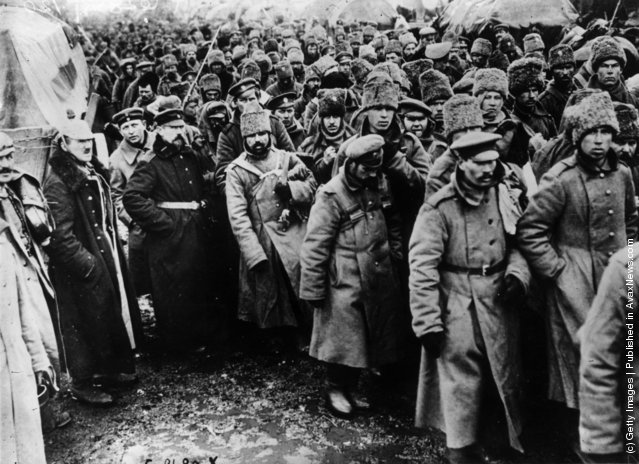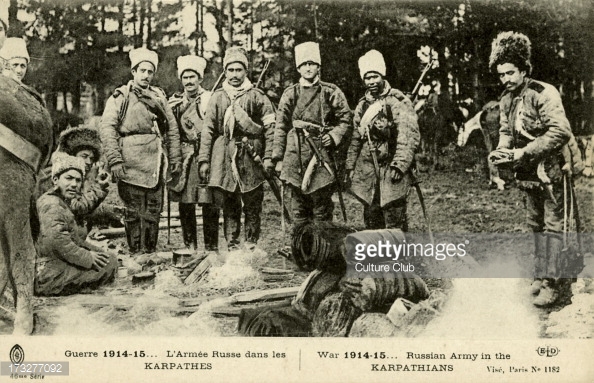On Eastern Front, A String of Austrian Defeats;
Germany on Its Own.
Special to The Great War Project
(22-24 February) Stalemate remains the order of the day on the Western Front, but on the Eastern Front, the war is more fluid.
“The scale of battle remained a formidable one,” reports historian Martin Gilbert. Consequently, there are more casualties and more prisoners – on both sides.
On February 22nd a century ago, the Germans take one town in Poland, Przasnysz, along with 10,000 prisoners.
The Russians drive the Germans from the town three days later and seize 5,400 German prisoners.
On a much larger scale is the emerging fight for the Masurian Lakes in southern Poland...
…a battle between the Germans and the Russians. This is the second clash in this region, and like the first, writes historian Michael Neiberg, the Germans strike quickly and with great surprise in these days a century ago. They mean to encircle the Russians.
The German surprise attack takes place during a snowstorm, thick fog, and bitter cold. It’s designed “to prove that the Russians were close to collapse,” writes Neiberg
.
Tens of thousands of Russian troops surrender. The Russians put the number at 12,000 and many thousands more killed, reports Neiberg. The Germans claim they take more than 90,000 Russian prisoner, according to war historian John Keegan.
There is evidence though that the majority of the Russian troops in the battle “had in fact escaped through the forest,” reports Keegan. Strategically the German victory insures that German East Prussia to the north is no longer threatened by the Russian army.
There is also fighting in the Carpathian Mountains, which separate eastern from central Europe. The Russians are on the offensive, pressing into Austro-Hungarian territory. Initially according to Keegan, “there is no clear-cut result.” The Austrians with German support attack, “only to find the Russians respond with unexpected energy.”
“The terrain and the weather in the Carpathians inflicted setbacks and terrible suffering” on the German troops,..
“who froze and starved amid the steep valleys and forests.” As for the Russians, writes Keegan, they are less affected, much to the consternation of the Germans and the Austrians.
The damage to the Austrian war effort is enormous. Austria’s losses in the first months of 1915 add 800,000 to the already 1.2 million losses suffered in 1914.
“Without massive German help,” writes Keegan, “the Habsburg empire faced a culminating crisis.”
“The Austrians were plainly on their last legs,” writes historian Geoffrey Wawro. “The Habsburg Empire looked fatally weakened by its relentless defeats and million casualties.” It is outnumbered on the Russian front and crushed time and again in Serbia in southeast Europe.
The danger spreads to Germany as well.
“If the Dual Monarchy collapsed,” Wawro reports, “the Germans would probably go under too. Unable thus far to win in the west, how would Berlin wage a two-front war without Austro-Hungarian manpower?”
“The Germans would have to defend their western and eastern borders alone, break the tightening British naval blockade, and fend off yet another great-power army.”
Italy is poised to enter the war, on the side of the Allies.


